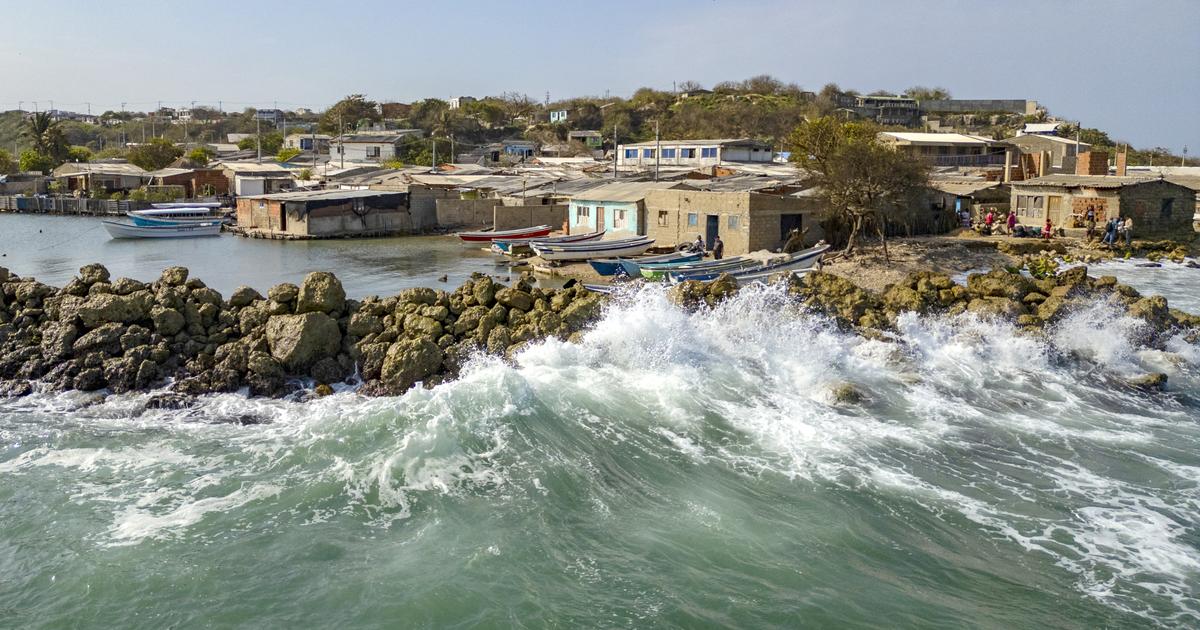After Venice, Cartagena de Indias... Every year, the sea level rises and gradually engulfs the bay of the colonial city on the Caribbean coast.
Colombia's most touristy city could be partially submerged by the end of the century, scientists warn.
Additional proof of this risk: on the island of Tierra Bomba, opposite the fortified city of nearly a million inhabitants, listed as a UNESCO world heritage site, water invaded an ancient cemetery in February, digging up the skulls. of the deceased.
Mirla Aaron, a 53-year-old community leader, was shocked to discover the bones, from graves so old that no one came to collect them.
In recent decades, the sea
“has destroyed 250 houses in the community, the health post, the docks (...) it has submerged several community halls, the electrical infrastructure”
and now the cemetery, she says. .
“Dark Cartagena!”
Little by little, the sea is eating away at Tierra Bomba Island, directly threatened by rising water levels, higher than the world average.
LUIS ACOSTA / AFP
“Unfortunately, the island has been the victim of a process of erosion (...) which has increased exponentially in recent decades
,” explains Mirla Aaron.
“
Dark Cartagena!”
» The seriousness of the situation was revealed in 2021 in a study published by the scientific journal
Nature
, which caused a stir in the Colombian press.
According to this study, since the beginning of the 21st century, sea levels have risen in Cartagena each year by 7.02 mm, compared to the world average of 2.9 mm.
First of all, global warming is affecting the entire planet, with increased greenhouse gas emissions, causing the melting of ice at the poles.
The sea in the bay could rise by 26 cm by 2050 and by 76 cm by 2100, say researchers from the University of Zagreb, Miami International University and local EAFIT University.
But, an aggravating factor for Colombia's main commercial port, its construction took place on land with underground cavities which have collapsed over the years.
Residents who lose their homes
“The rise in sea levels in the coastal area of Cartagena is due to two factors
,” explains Marko Tosic, a Canadian environmental scientist and one of the authors of the publication.
The cause is firstly global warming, but also
“land subsidence”
, which occurs in particular
“due to tectonic factors”
.
View of houses affected by rising sea levels on Tierra Bomba Island, Cartagena de Indias.
LUIS ACOSTA / AFP
Ten years ago, Kelly Mendoza, 31, moved near the shore on the island of Tierra Bomba.
Since then, two of his neighbors have lost their homes, gradually washed away by the waters.
The waves are already hitting the wall of her brick house, in the room where she sleeps with her husband.
“When the wave hits the wall, I'm afraid because it's as if the partition was going to fall
,” that
“I was going to find myself in the sea with my bed
,” she says.
The town hall did not respond to AFP's requests for information on the number of people relocated due to coastal erosion.
At 87 years old, Inés Jiménez no longer recognizes the environment in which she grew up.
She remembers having to move with her parents because their house was flooded.
People
“settled a little further away”
to escape the rising sea, she says, pointing out in the distance on the waves where, according to her memories, the coastline was located.
Unavoidable rising water levels
Marko Tosic warns that the rise in water levels in the Caribbean Sea is gradual, but inevitable.
This is a
“very small change, we are talking about millimeters over the years”
.
In 2024, the authorities must install concrete groynes and riprap along nearly 4.5 kilometers along the colonial city to cushion the impact of waves.
The work is particularly visible on Bocagrande beach, a seafront with many hotels.
The town hall says that without this, almost the entire city (80%) would risk being flooded.
Mauricio Giraldo, a representative of artisanal fishermen, deplores, however, that the shield under construction will only protect tourist areas and luxury hotels and expresses his concern for the poorest areas.

